Allen C. Guelzo on Reconstruction
An Interview with Sara Gabbard
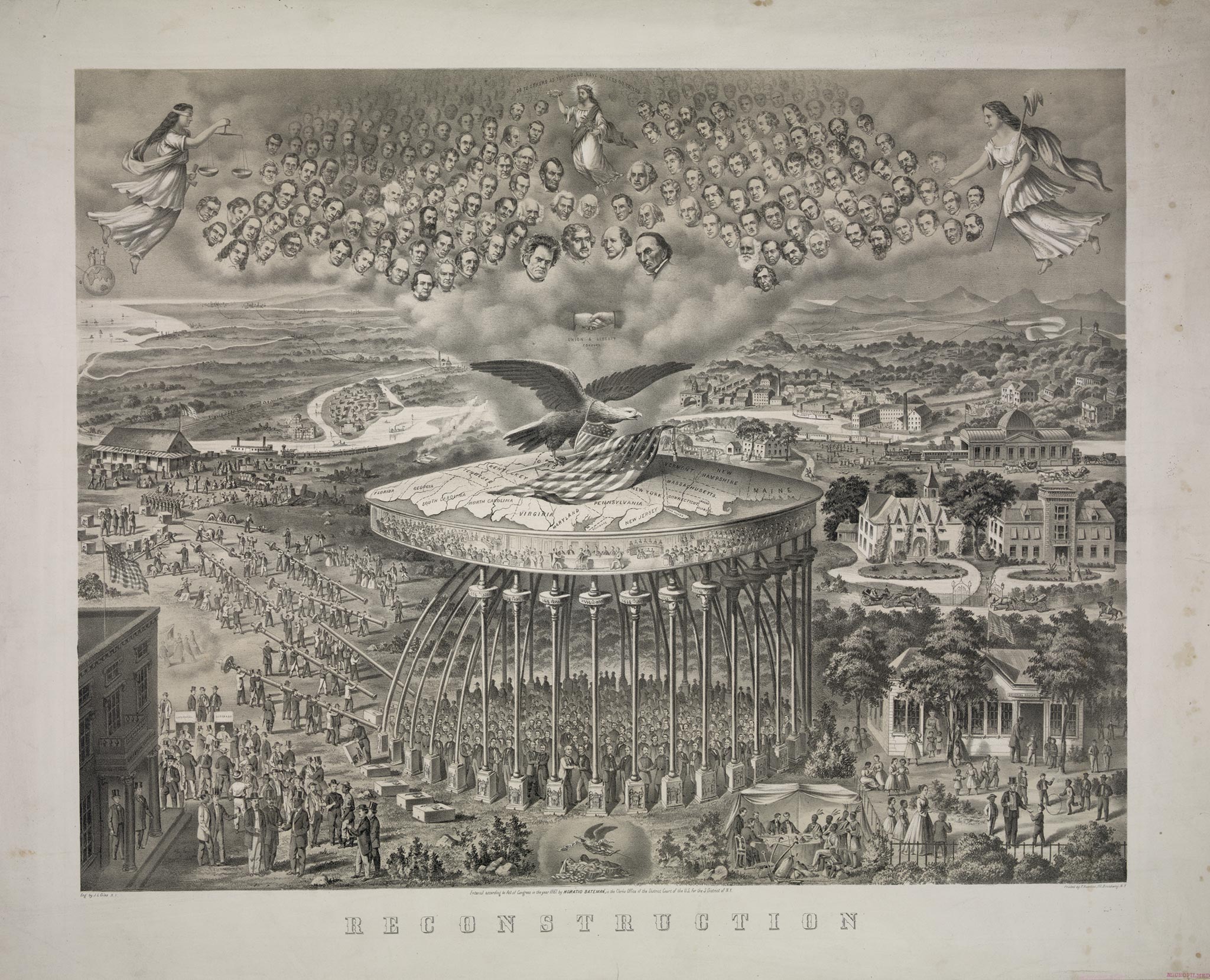
Sara Gabbard: As a nation, do we tend to ignore the history of Reconstruction? If so, why?
Allen Guelzo: Oh, my, yes, and probably more than any other chunk of our history. Just think: there are no Reconstruction reenactors, no reconstructed Reconstruction villages on the order of Colonial Williamsburg or Old Sturbridge, no Reconstruction observances and ceremonies. There are several historic sites in the National Park Service system associated more or less with Reconstruction, but the first national monument to Reconstruction, in Beaufort, South Carolina, was only dedicated in January of 2017.
There are, I think, three reasons for this. One is that, compared to the Civil War years, Reconstruction offers little in the way of historical drama—by which I mean, there are no climactic battles (no Bull Runs or Gettysburgs), few easily recognizable historical players (and none of them in uniform), and dreary doses of long political process, mottled by heavy latherings of governmental corruption. There’s plenty of violence, but it is violence of the sort we usually deplore: race riots, lynchings, the Ku Klux Klan.
A second reason has to do with the sense of failure that hangs over Reconstruction, and if there’s one thing Americans don’t like to talk about, it’s failure. At the end of the Civil War, the “Slave Power” had been destroyed, free-labor Republicanism was triumphant, and the freed slave was poised on the verge of assuming an equal place in American society with every other citizen. Fifteen years later, the one-time slaveholders were back in control of the South, free-labor Republicanism was coping with the first stresses of mass industrialization in its own Northern backyard, and the freedmen were consigned to an economic peonage that offered little practical improvement on enslavement. It began to seem that a great opportunity had been bobbled away.
The irony of that conclusion—and this is the third reason—is that the Civil War’s victors ended up blaming themselves, or at least allowing the defeated South to foist the blame on them. Postwar Southerners never accepted the results of military defeat in the war, and they resisted Reconstruction (and much more effectively than they had resisted the Union armies) by denouncing Reconstruction as a vicious, vengeful military occupation, aided and abetted by unscrupulous Northern speculators (“carpetbaggers”) and Southern quislings (“scalawags”). This hit Northerners in two sensitive areas. One was the instinctive American distaste for military control over civilian affairs; the other was guilt, for the destruction inflicted on the South and for the waves of political scandal which swept through the postwar North.
SG: In an article for the Claremont Review of Books, you addressed the difficulty in assigning a definite time period for Reconstruction. Please explain the options.
AG: The usual chronology for Reconstruction begins with the surrender of the Confederate armies in 1865, and ends with the withdrawal of the last Union occupation forces in the spring of 1877 as part of the deal that secured the presidency for Rutherford B. Hayes. This is much too easy. The first reconstructions really date to 1862, with Lincoln’s appointment of interim Unionist regimes in Louisiana, Arkansas, Tennessee, and North Carolina. Some of these were flat-out mistakes (Lincoln’s appointment of Edward Stanly as a provisional Unionist governor in North Carolina was a particular embarrassment) but others—especially Tennessee and Louisiana—proved surprisingly durable. Tennessee, in fact, was never subject to most of the policies we usually think of as Reconstruction between the years 1865 and 1877.
In between, we can divvy up Reconstruction into three periods: the first is “Presidential Reconstruction,” from 1862 (or 1865) until 1867, in which the rules for reconstructing the Confederate states were handed down by the president (Lincoln or Andrew Johnson).
The second period is “Congressional Reconstruction,” when Congress seized control of the process with the Reconstruction Acts of 1867 and reset the whole process. The third period, from 1870 to 1877, is really the most agonizing, since it encompasses the slow-motion of the Reconstruction regimes created under the 1867 Acts and the return of the South to home rule by the people who, for all practical purposes, had been its rulers before the war.
Technically, Reconstruction was “over” when the last of the Confederate states had written new state constitutions and elected representatives and senators in conformity with the Reconstruction Acts. This happened fairly quickly, between June 1868 and July 1870, and it put in place state governments that were largely dominated by Republicans and that made heroic efforts to make a reality of voting rights for the freed slaves. But one by one, the wheels came off these reconstructed state governments and the old Southern Democratic power machines regained control. But “regained” is too anodyne; “overthrew” is the real word, since the recapture of these state governments was accomplished by violence and black voter intimidation.
However, the clock had not gone entirely backward. The freed slaves had made important economic and political beachheads in the Reconstruction years, and Republican administrations in the 1880s and 1890s used federal patronage authority to support them. Legal disenfranchisement and mandatory racial segregation did not become widespread until the 1890s, when the U.S. Supreme Court curtailed much of what remained of the federal government’s authority to intervene in the South. So, in a very attenuated sense, Reconstruction sputters on until Plessy v. Ferguson in 1896 and the Wilmington, North Carolina, race war of 1898.
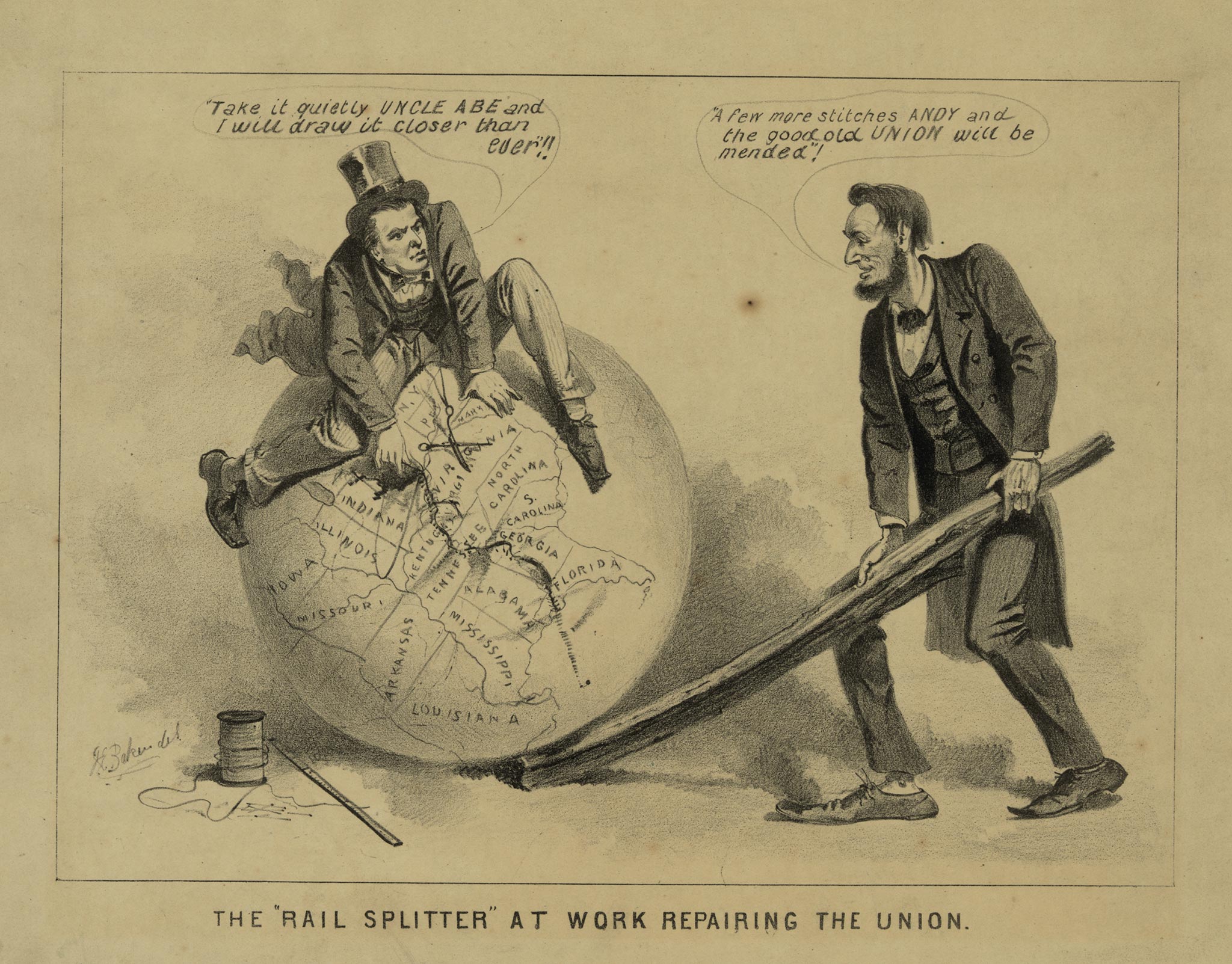
SG: In the same article, you stated, “But Reconstruction became a symbol of how quickly political fatigue afflicts liberal democracies.” Please elaborate.
AG: There are really two things at work here. The first is that in a liberal democracy, sovereignty lies in the people at large; and our governing structures exist to implement that will. This is why Lincoln believed that “Public sentiment is everything…. Whoever can change public opinion can change the government.” The second is that the attention span for political affairs in a democracy is a limited one. The fundamental genius of a liberal democracy lies in how it restrains government and permits its citizens to pursue their own interests without unnecessary molestation. So when we must address political or national issues—whether it’s “On to Richmond” or “54-40 or Fight”—we want problems addressed swiftly, so that we can turn back to our private concerns. When that doesn’t happen, we turn back to the private concerns anyway, and the problems and their solutions are left to fester or find their own solutions.
Postwar Southerners carried out an asymmetrical kind of political warfare that the rest of the country eventually ran out of patience in confronting. We had the West to win, the Pacific Rim to open, a new economy to create, a catastrophic financial panic to overcome, and in the end, dealing with the political insurgencies of disaffected ex-Confederates simply couldn’t compete. When Mississippi’s Republican governor, Adelbert Ames, demanded federal troops to put down election-day violence in 1876, he was told by the Attorney General that “the whole public was tired of these annual autumnal outbreaks in the South.” We have seen the same process play out more recently, both in Vietnam in the 1960s and in Iraq after 2003. In 1968, we won a substantial military victory, as we did in 2003; we then fumbled them away because of our inability to keep a long-term focus on the political aftermath, and we live with the results to this day. This is, so to speak, the advantage tyrants and dictators have over democracies: they can force their people to pay attention to the problems they choose to address, and for as long as they wish (or until their people overthrow them, which is not all that common).
I want to add, though, that this should not be considered the whole story of Reconstruction. Remember, I said that Reconstruction was overthrown, not that it ground to an exhausted halt. Indifference and inattention helped to divert resources from Reconstruction, but the real dagger was planted in Reconstruction’s back by political insurgency. That’s a more important point, to which I want to come back.
SG: When was the term “Reconstruction” first used? Was it used in a positive or negative sense? Or was the meaning determined “in the eye of the beholder?”
AG: The term reconstruction actually surfaced even before the Civil War began in 1861, although in its first form it was a way of describing how the Constitution would have to be amended in order to accommodate the demands of the Southern states and head off their secession. The term resurfaced in 1862, this time to describe the pacification policies the federal government might deploy once the Union armies had suppressed the Confederate rebellion. It quickly became associated with Charles Sumner’s call for the reduction of the Confederate states to territorial status, which was why Lincoln was never at ease in using the word.
When he did, he qualified it with add-ons like “what is called reconstruction” or “a plan of reconstruction (as the phrase goes).” He preferred to speak of the “re-inauguration of the national authority” or the need to “re-inaugurate loyal state governments.” But by 1865, it had clearly become the term to describe whatever federal policies would be used to reintegrate the Confederate states with the Union.
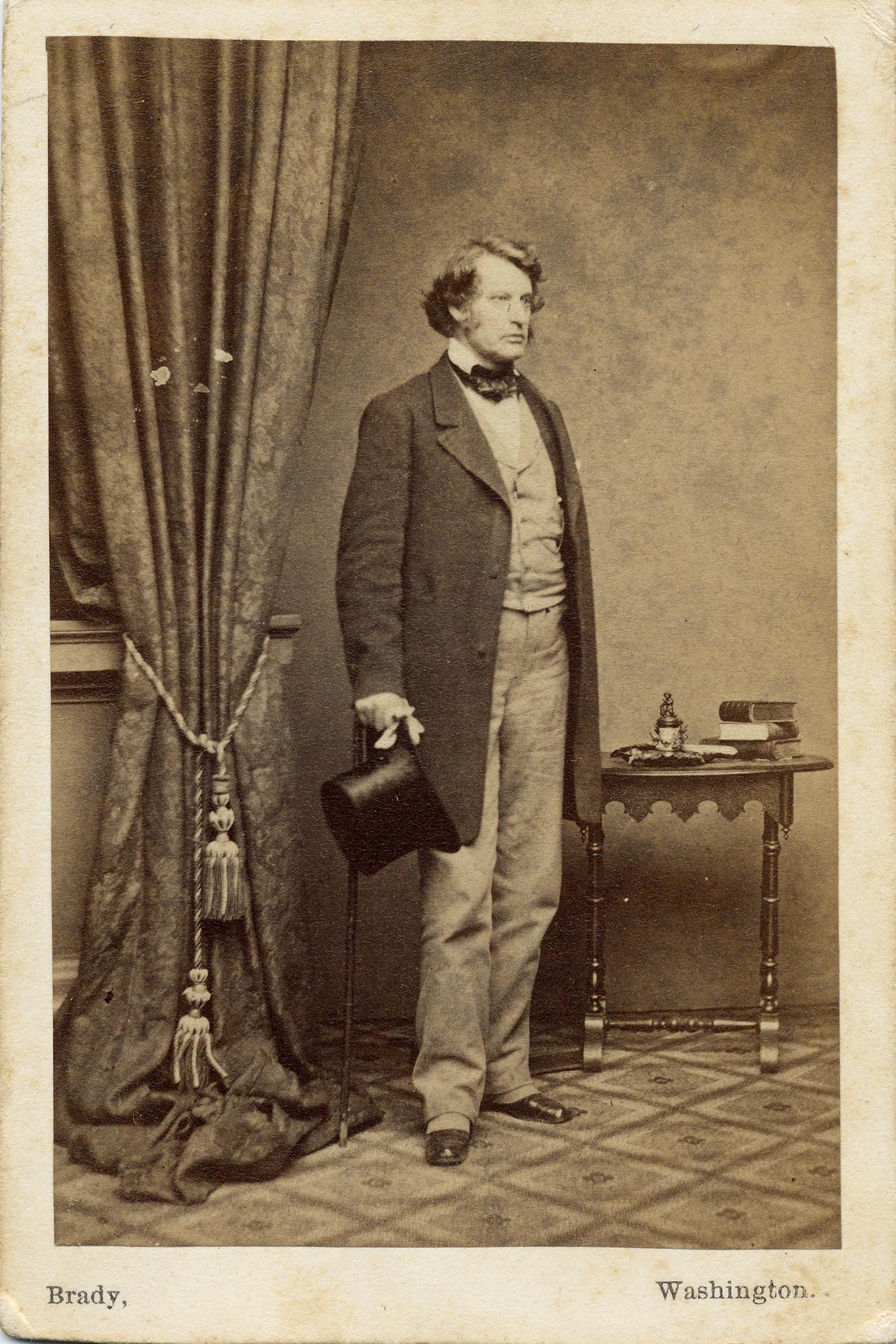
SG: Did Lincoln and/or his Cabinet discuss postwar plans with any frequency? Were definite policies suggested?
AG: They discussed various options quite frequently. But bear in mind that these were explorations. There was no handbook on how to conduct reconstructions, especially after conflicts as disastrous as civil wars, and the historical examples were all at sixes-and-sevens. This is why so much of the history of Reconstruction has the feeling of improvisation—because it really was improvisation. One step would be taken—say, the 13th Amendment, abolishing slavery—only to have people in Congress realize that this did nothing about citizenship; hence a 14th Amendment is required. But the 14th Amendment failed to link citizenship and voting rights, and so a 15th Amendment has to be confected. This, of course, takes time, and has the potential for mistakes—both of which, unhappily, are fatal in a democratic process. In his last public speech, Lincoln hinted at having in hand “some new announcement to the people of the South,” but we have no real outline of what that implied.
What seemed more important to Lincoln during the war was establishing, not a specific Reconstruction strategy, but which of the branches of the federal government—executive, legislative, judicial—actually had authority over Reconstruction. Sumner and the Republicans in Congress believed that it was the prerogative of Congress, not the president, to create the policies that controlled Reconstruction. When Lincoln laid out his first detailed strategy for “Amnesty and Reconstruction” in December 1863, he proposed to use his executive authority to grant full pardons “with restoration of all rights of property, except as to slaves” to any inhabitants of Southern states reoccupied by federal military forces upon taking an oath of future loyalty (and keeping “said oath inviolate”). This would allow Lincoln to “re-establish a State government” as soon as the oath takers numbered just 10 percent of the 1860 voting population in each state—and provided that the “reinaugurated” state governments abolished slavery.
Unsatisfied with this (and with the idea that Lincoln had the authority to make Reconstruction an executive act), Ohio Senator Benjamin Wade and Maryland Congressman Henry Winter Davis designed a Congressional reconstruction plan, raising the number of oath takers from 10 to 50 percent; then, a civilian provisional governor would be appointed, and the eligible voters would elect a state convention to write a new state constitution banning slavery and forbidding rebel officers from serving in the legislature or as governor. Lincoln scoffed at the Wade-Davis plan. Reconstruction, he asserted, was an executive responsibility, just as managing the war had been; the legislative branch of the government had nothing to do with it, any more than it had the authority to trespass on his military authority as commander in chief. So, he pocket-vetoed the Wade-Davis plan on July 8, 1864.
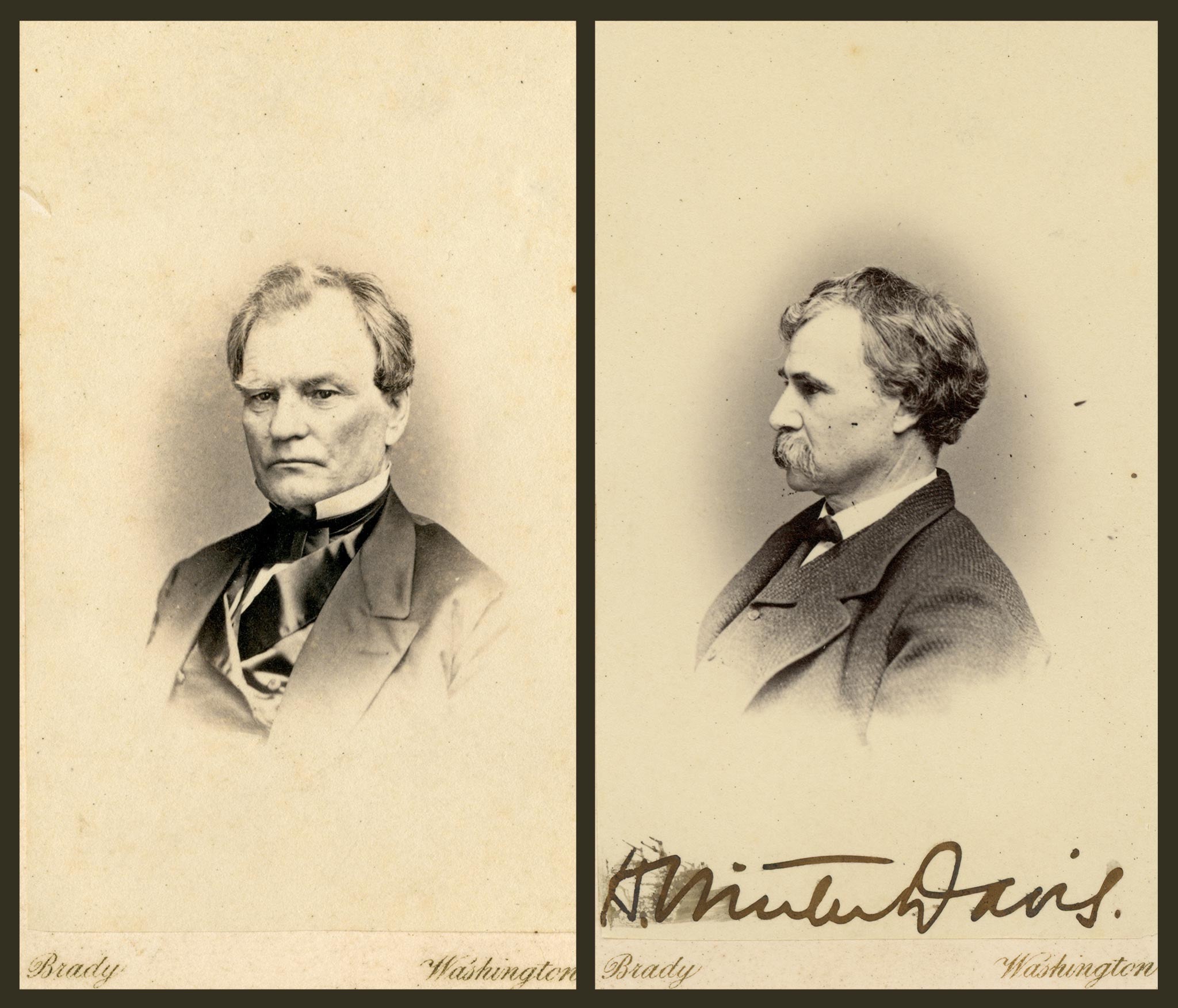
This contention over jurisdiction would flame out again as soon as Congress reassembled under Andrew Johnson in December 1865, and in that contest, the executive branch sustained a major defeat, culminating in Johnson’s impeachment in 1868. The surprising thing, however, is that it was neither the executive branch nor the legislative branch that had the last word on Reconstruction. That came from the federal judiciary, in the form of the judicial decisions that undid much of Congress’ Reconstruction legislation.
SG: What happened to cotton production after the war? How were free blacks affected?
AG: Given the heavy blows struck at Southern infrastructure by the Civil War, we often imagine that cotton, the mainstay of the Southern economy, must somehow have fallen out of the picture. It’s true that the major textile-manufacturing economies—Britain and France in particular—managed to locate alternative sources for raw cotton during the war. Nevertheless, cotton agriculture remained the producer of the single most valuable American export commodity (some 32 percent of all exports as late as 1889). Great Britain still bought 58 percent of the cotton it imported for textile manufacturing from the United States, and that would continue to rise through 1876.
Given the free hand with which Andrew Johnson distributed pardons and amnesties to the ex-Confederates, the survivors of the war remained by-and-large in control of the postwar cotton lands, and therefore of the postwar Southern economy. For instance: in prewar western Alabama, just 236 landowners sat at the top of the economic pyramid (which is to say, they owned at least $10,000 in real estate in 1860, with the median landholding amounting to 1,600 acres). By 1870, 101 of those landowners were still in possession—which was about the same rate of persistence over time that had prevailed before the war.
In other words, for all the economic destruction levied on the South by the war, the people who ran the economic show before the war were still running it afterwards. Former slaveholders were thus free to use cotton profits to maintain a version of the plantation system and force the freedpeople into peonage; peonage, in turn, gave white Democrats the power to control black voting and, as a Vermont journalist put it, “keep the negro in his condition of ignorance, that they may retain him as nearly as possible in his old state of slavery.”
SG: Please trace the development of Jim Crow.
AG: Jim Crow is not, strictly speaking, a product of Reconstruction, although it could not have developed in the South without Reconstruction (or rather, its failure). First of all, “Jim Crow,” as a name, is rooted in a folk character in African American culture, a little like Brer Rabbit; “Jim Crow” was then absorbed into blackface minstrelsy and turned into a stock “Sambo” character. It emerged as a shorthand name for public policies of racial segregation later in the nineteenth century, since “Jim Crow”—as a stand-in for any African American—was the target of segregationist state laws.
C. Vann Woodward’s classic, The Strange Career of Jim Crow, underscored the irony of Jim Crow’s development, since slavery forced blacks and whites into close, but unwelcome, contact as masters and slaves. Segregation only became a viable policy after slavery ended, when whites could no longer exercise personal mastery over African Americans. Not that slavery didn’t mandate racial apartheid in other ways, or that Southern state attempts to reconstruct themselves under Andrew Johnson’s presidency didn’t reach for segregation as a solution in the few months in 1865 and 1866 when they were active.
Congressional Reconstruction, however, was not necessarily dedicated to reversing social segregation; it took some determined striving on the part of Lyman Trumbull (in the 1866 Civil Rights Act) and Charles Sumner (in his posthumous Civil Rights bill of 1875) to attack social segregation in the South, since it was clear that social segregation would afford truculent Southerners an opportunity to isolate and besiege political rights for the freed slaves. It was only after the restraints imposed by Reconstruction, and by the Civil Rights legislation, had been removed that “Jim Crow” legislation was allowed to enter into almost every aspect of public life in the South.
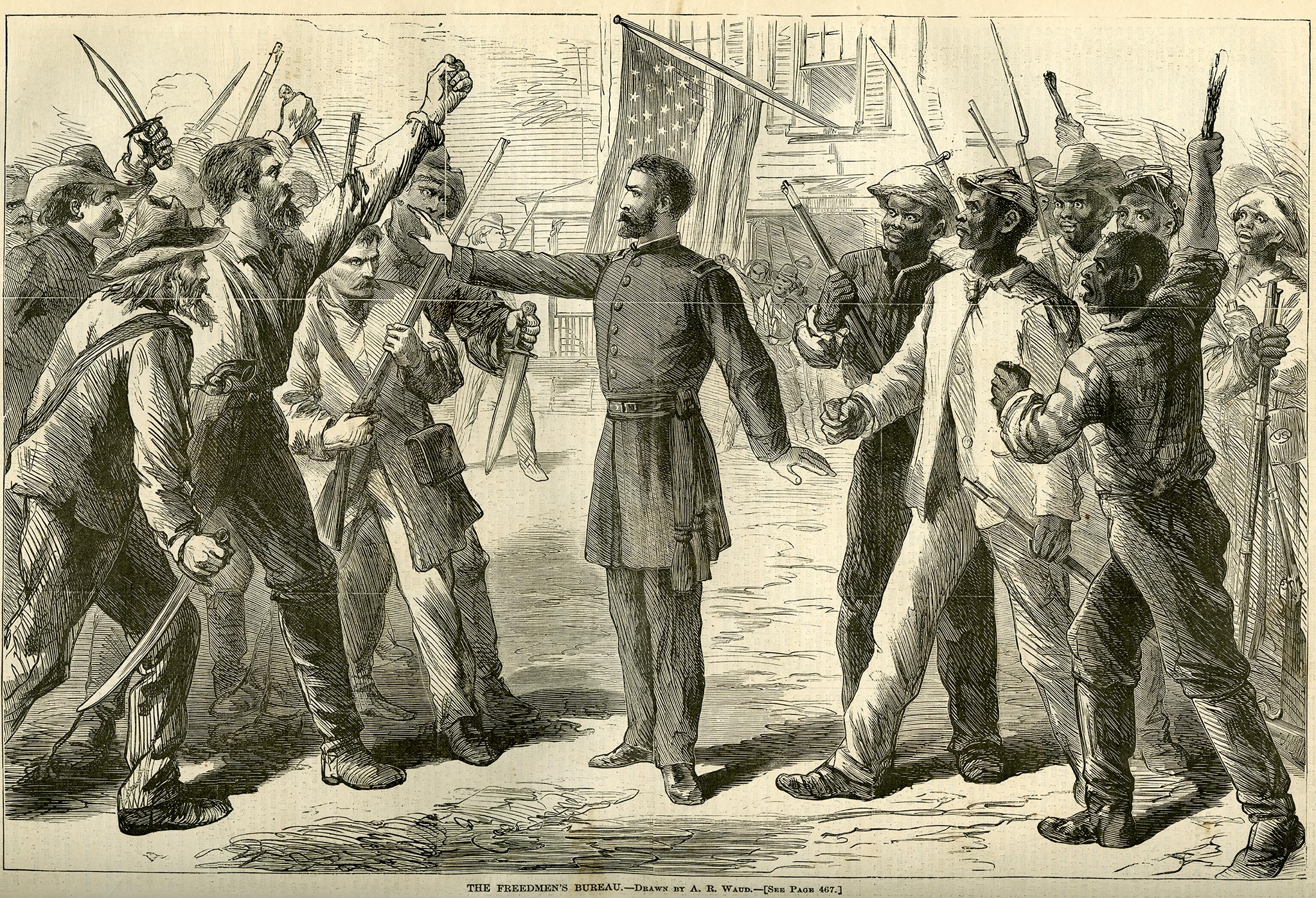
SG: Freedmen’s Bureau: Success? Failure? Some of each?
AG: In the sense that the Freedmen’s Bureau was established to function as a transition agency, helping and advising freed slaves as a sort of halfway house between slavery and freedom, it was remarkably successful. It benefitted from strong, idealistic leadership from its head, Oliver Otis Howard, and often provided freed slaves with the only legal and financial assistance they could call upon.
The difficulty for the Bureau, however, was that it was never adequately funded and quickly became a political football that Andrew Johnson loved to kick; and it represented an intrusion of federal authority into the states of a nature that had never existed before. Once Congressional Reconstruction had restored the former Confederate states to practical membership in the Union, it was difficult to justify the Bureau’s continued existence, and by 1871, it had been effectively shut down.
SG: What was happening in the “Northern States” during the period we call Reconstruction? Was there much coverage in newspapers of the situation in the South?
AG: We almost always speak of Reconstruction as something which happened “down South.” Actually, many of the templates for federal action developed for the South were also applied to the West. (Mormon Utah underwent almost exactly the same sort of scrutiny and restructuring as the former Confederacy before being admitted as a state. Remember that Lincoln’s Republicans had attacked slavery and polygamy as the “twin relics of barbarism,” and they saw no reason why they should not reconstruct the one as effectively as the other.) Curiously, federal Reconstruction policy in the West was actually more successful than in the South; the wars with the Plains tribes between 1866 and 1890 were waged on approximately the same lines as the attempted counter-insurgency against anti-black domestic rioting in 1865-66 and the Ku Klux Klan in 1870-71, and by many of the same professional soldiers—Sherman, Sheridan, Custer, Howard.
The work of Heather Cox Richardson, Gregory Downs, and Steven Hahn has directed much more attention to the West as a theatre of Reconstruction than ever before. What has gone maddeningly a-begging is what happened in the North during Reconstruction. There is a curious sense, imparted by much of the literature about Reconstruction, that Northerners undertook Reconstruction in 1865 as though they were all of one mind, and one Republican mind at that. This, of course, was not true. Even though Lincoln won a resounding victory at the polls in his re-election campaign in November 1864, the Democratic opposition did not, by any means, disappear, and much of it remained militantly hostile to black enfranchisement and black equality, North as well as South.
Andrew Johnson hoped to capitalize on wedding Northern Democrats and moderate Republicans (who were often ex-Democrats), and he blundered only because of his own personal political ineptness and the embarrassment afforded by race riots in New Orleans and Memphis just before the key 1866 Congressional elections.
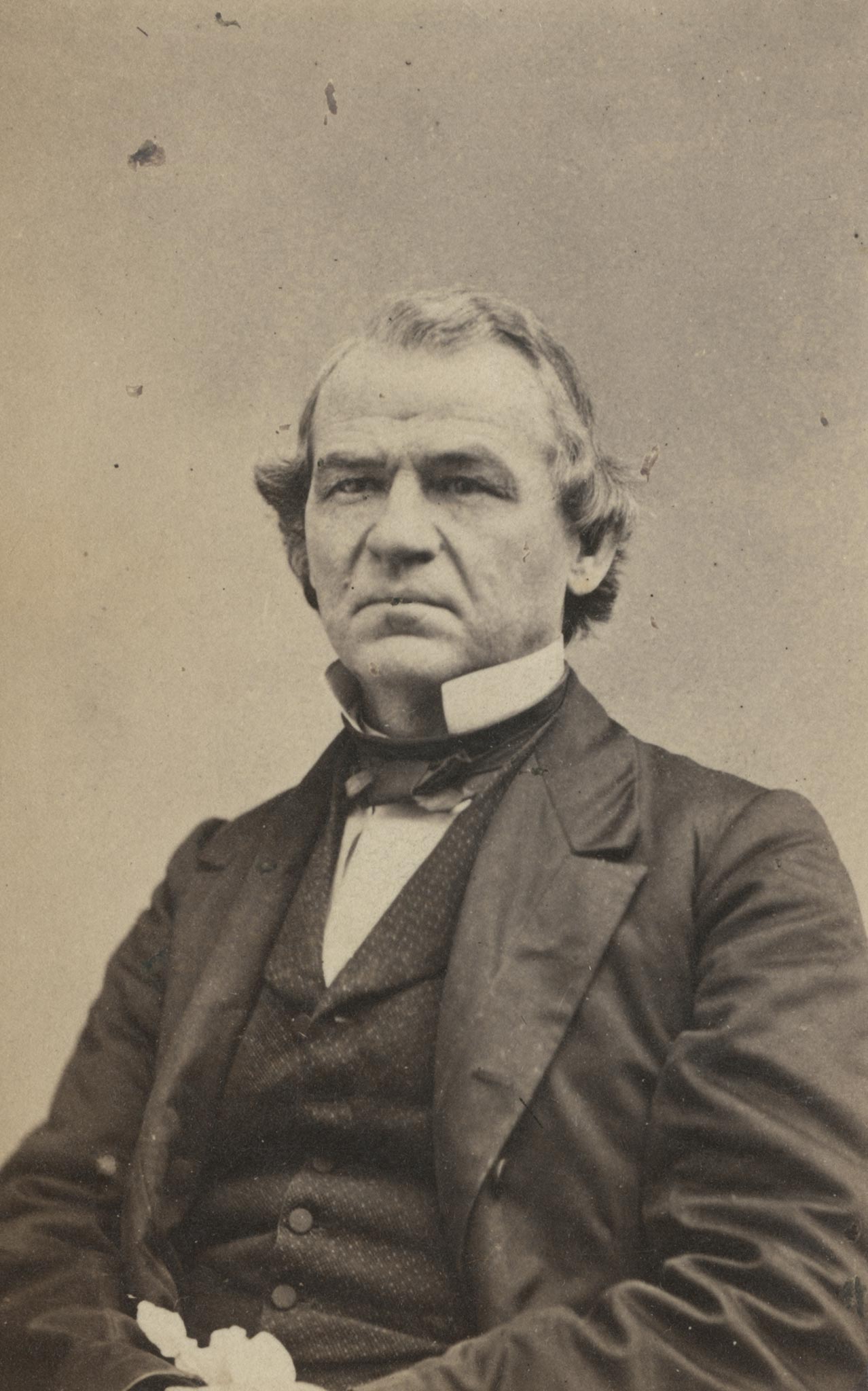
Even so, it did not take long for Northern Democrats to re-assert themselves: Radical Ohio Senator Benjamin Wade lost his Senate seat in 1868 when the state legislature changed hands; Radical Representatives James Ashley (the floor leader for the 13th Amendment) and John A. Bingham (the architect of the 14th Amendment) were deposed in the years 1868 and 1872.
Even though a Republican, Ulysses Grant, won the presidency with 58 percent of the popular vote in 1868, this was not as resounding a Republican triumph as it seems. Grant lost New York by 10,000 votes and New York City by 60,000. Five states had given him victory margins of less than 5 percent, and Democrats gained twenty-two seats in the House of Representatives. Four governorships fell into Democratic hands; in Maryland, every state legislative district and all five U.S. Representatives went Democratic, while in New Jersey, three of the five Congressional districts elected Democrats, and Democrats held the state legislature.
So, as early as 1868, Northern Democrats were staging a long march back to dominance, and when that happened, they would find useful allies in their old Southern Democratic counterparts. As John Mercer Langston warned, “the unrighteous alliance of the Democratic party of the North with the rebel spirit at the South…still lingers with the hope that this combination will again put the southerners in the political ascendance.”
The Panic of 1873 was what finally tipped the balances. Voters went to the polls in 1874 with economic desperation in their hearts and put the Democrats back into the majority of the House of Representatives, after which it was clear that no more funding to protect Southern Republican state governments from overthrow would be forthcoming. Reconstruction, at that moment, was as good as dead; it would simply take another two years before life support was removed.
What this undermines is the long-held notion that the failure of Reconstruction lies primarily with white Northern Republicans who talked-the-talk on a new, racially egalitarian America, but who quickly tired of walking-the-walk and somehow abandoned Reconstruction, and African Americans, to their fate. No doubt, “Reconstruction fatigue” dampened many a well-intentioned Northern Republican’s political ardor. But the real story in the North is the back-from-the-dead resumption of a Democratic political ascendency between 1865 and 1874, and how that resumption once again clasped hands with its historic Southern Democratic allies. That, together with the white supremacist insurgency (conducted by the Klan, the Knights of the White Camellia, the League of Pale Faces) is what tells the tale of Reconstruction’s demise.
SG: What was the Dunning School? Who were the “anti-Dunningites?”
AG: American history writing until the 1880s was mostly an affair of genteel amateurs—Francis Parkman, William Hinkling Prescott, John Lothrop Motley. But the reign of the genteel amateur in American life was brought to a close by the rise of Progressivism, which advocated professionalism and efficiency as the answers to the problems of American politics and culture. Especially in politics: the decades of corruption symbolized by Boss Tweed, the Credit Mobilier Scandal, and the “robber barons” were blamed by the Progressives on an ignorant and easily excitable electorate which kept returning the bosses to power even after the stench of their graft could be smelled by all. The problem, in fact, was democracy itself, which constantly elbowed aside the intelligent and well informed in favor of voting for the clever and the popular.
The obvious source for a new generation of professional experts lay with the American colleges and universities, which until the Civil War had often been little more than finishing schools for polite literary classicism. The model of the German universities, which supplied credentialed expertise to the Prussian state bureaucracy, became the most favored model for Progressive reformers, and by the 1890s, what had once been the preserve of well-bred poetasters now became the arena of scientific professionalism in the German style.
William Archibald Dunning (1857-1922) is a virtual textbook example of this development, earning one of the first American PhDs in history at Columbia and staying there to teach for the rest of his career. Although Reconstruction was not his primary historical interest, it nevertheless offered Dunning a prime example of how disastrously awry democracy could go when unguided by superior wisdom. The Republican state governments under Reconstruction had been built on newly enfranchised black voters, fresh from the cotton fields and barely able to read or write; they in turn, elected black state legislatures with scarcely a shred of competence or experience. No wonder, on Progressive terms, Reconstruction had been a nightmare.
Dunning’s influence came partly through his essays on Reconstruction, but mostly from the cadre of graduate students whom he trained at Columbia and who wrote a series of PhD dissertations on Reconstruction in Southern state after Southern state: James Wilford Garner, Reconstruction in Mississippi (1901), John S. Reynolds, Reconstruction in South Carolina, 1865–1877 (1905), Walter L. Fleming, Civil War and Reconstruction in Alabama (1905), Charles W. Ramsdell, Reconstruction in Texas (1910), William Watson Davis, The Civil War and Reconstruction in Florida (1913), J.G. de Roulhac Hamilton, Reconstruction in North Carolina (1914), Clara Mildred Thompson, Reconstruction in Georgia (1915). Their research was deep, painstaking, and massive. But they all sang the same Progressive song: Reconstruction brought to the South, not democracy, but mob rule, and to Washington, nothing but vindictiveness and plunder. And the fault lay with enfranchising a black race whom the Progressives believed were, ipso facto, inferior and unequipped for the job of self-government.
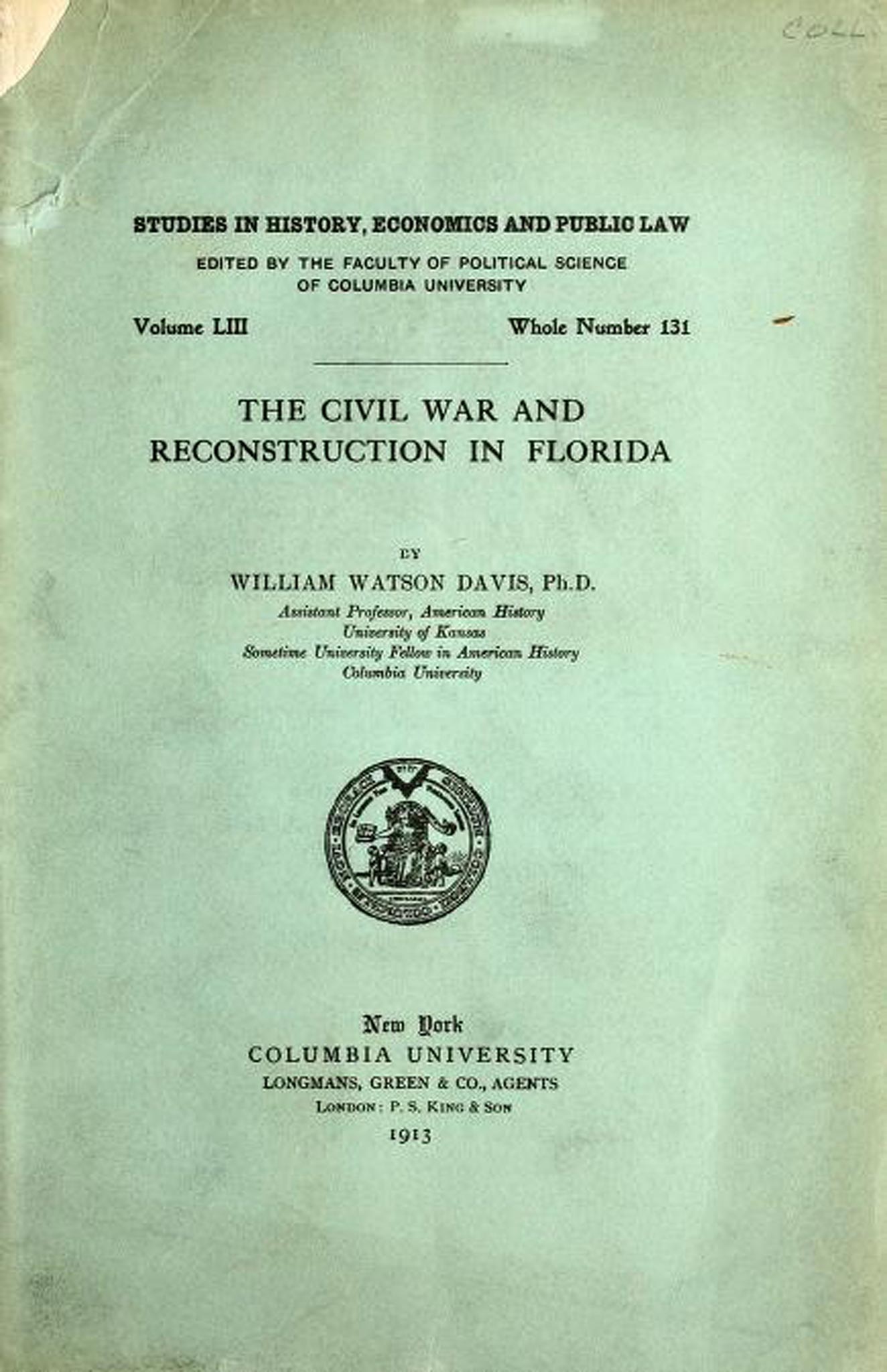
I know it seems strange to say that Progressivism wore a white supremacist face. But the most thorough going Progressive president, Woodrow Wilson, was an unabashed white supremacist. So, it should not be surprising that criticism of the Dunning School made its first appearance in the 1930s from the premier African American intellectual, William Edward Burghardt Du Bois, in Black Reconstruction (1935), and by James S. Allen in Reconstruction: The Battle for Democracy (1937).
Still, it would not be until the 1960s, after the emergence of the civil rights movement as a “second Reconstruction,” that the Dunning School began to crumble, with John Hope Franklin’s Reconstruction After the Civil War (1961) and Kenneth Stampp’s The Era of Reconstruction, 1865-77 (1965) beginning the process.
Of course, the anti-Dunningites had their foibles, too. Du Bois and Allen were both writing from self-consciously Marxist frameworks that forbade any other understanding of Reconstruction but through class and revolution, with race sometimes deployed as a surrogate for class. And it has become conventional for historians like Eric Foner, in Reconstruction: America’s Unfinished Revolution (1988) to treat Reconstruction as a kind of missed opportunity for blacks and whites to join together in class solidarity against the rise of industrial capitalism in post-Civil War America.
The obstacle in the path of such a Marxist narrative is that neither the Civil War nor Reconstruction fit neatly into traditional Marxist frameworks. Both the Civil War and Reconstruction belong to a chapter in American history in which the United States was still an overwhelmingly agricultural economy, and the contest that was waged between 1861 and 1865 was largely an argument (in economic terms) between the free-labor family farm and the slave-labor cotton plantation.
SG: What is your general opinion of the positive/negative situation (economic, political, cultural, etc.) in the United States during the years that we designate as “Reconstruction”?
AG: I think we need to shove aside the notions of the Progressives and Lost-Causers, that Reconstruction was some sort of Vichy occupation of a poor, pitiable South, as well as of the Marxists, that Reconstruction could have been the beginning of a socialist America had not the monied interests suppressed it. Neither of these approaches has much sense of the texture of Reconstruction’s reality.
We also need to focus more than we have on what Reconstruction succeeded in doing: it helped us avoid a renewed outbreak of civil war (which, considering the history of civil conflicts, is no small achievement); it laid the legal and constitutional foundations for a more egalitarian America, foundations that it took only sixty-five years to revitalize into the Civil Rights Movement; it restored the original balance of constitutional federalism, putting aside the states’ rights absolutism of the pre-war Southern aristocracy. But I do not say this to encourage any historical Pollyannaism about Reconstruction. That restored federal balance permitted the emergence of the first women’s voting rights legislation, the curtailing of municipal corruption, and the introduction of widespread public schooling; it also permitted the emergence of Jim Crow. But as Lincoln said, “this is a world of compensation.” The historical good and the evil, even in Reconstruction, do not come unmixed.
SG: I look forward to reading your new book, Reconstruction: A Very Short Introduction (Oxford University Press, 2017). Please explain what led you to this topic and what will be the book’s focus.
AG: Two things: back in 2012, when I published Fateful Lightning: A New History of the Civil War and Reconstruction (also Oxford University Press), I devoted the closing chapter to a survey of Reconstruction. A particularly silly reviewer complained that this was unacceptably inadequate. So, I suppose I wanted to write this to show what lurked behind my “inadequacy.” And then there was a lunch one day with Jim Oakes (author of Freedom National: The Destruction of Slavery in the United States, 1861-1865 and The Radical and the Republican: Frederick Douglass, Abraham Lincoln, and the Triumph of Antislavery Politics), when we both fell to talking about Reconstruction, and both blurted out almost simultaneously the idea that Reconstruction should be considered as a “bourgeois revolution.” Everything in this interview, and the articles I have written subsequently, and the book itself, flow downstream from that moment.
Allen Guelzo is the Henry R. Luce III Professor of the Civil War Era at Gettysburg College.
